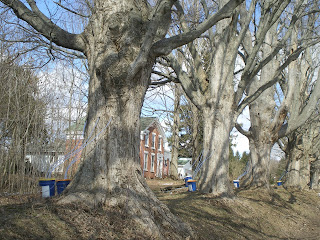Just checking in. The weather has been warming up quite a bit lately, melting off the snow and stirring the garden to life.
Sometimes it's just nice to walk along and look for their little faces peaking up through the parting snow.
For those who are curious: the second batch of eggs are coming along. Little wiggly feet can been clearly distinguished in several of them. We're getting close. The babies will grow considerably the next few days. Still we patiently wait and listen for those first few peeps.
Sometimes it's just nice to walk along and look for their little faces peaking up through the parting snow.
For those who are curious: the second batch of eggs are coming along. Little wiggly feet can been clearly distinguished in several of them. We're getting close. The babies will grow considerably the next few days. Still we patiently wait and listen for those first few peeps.











